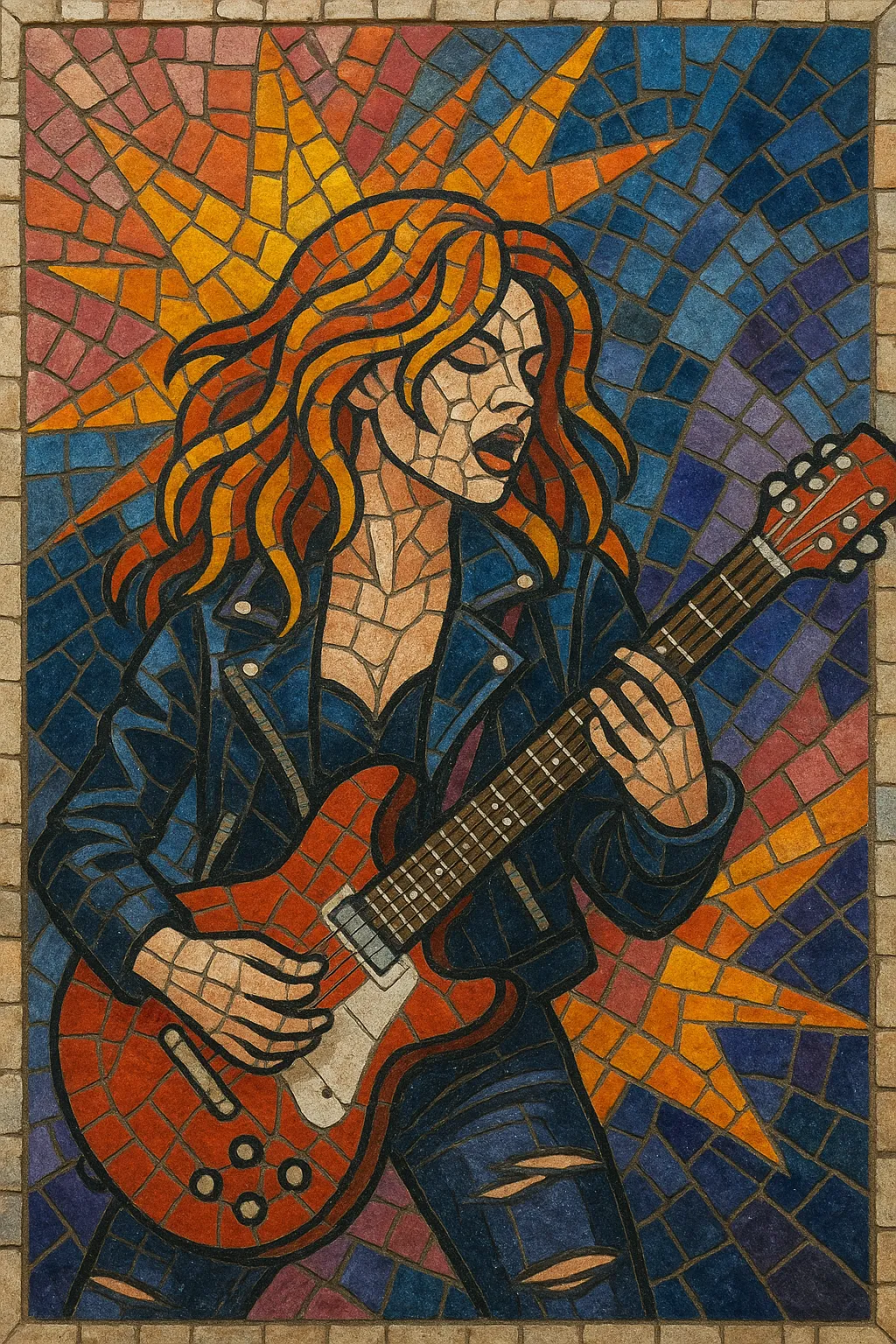Pop metal is a radio-friendly strain of heavy music that blends the polish and hooks of pop with the guitar-driven power of hard rock and heavy metal.
Characterized by anthemic choruses, glossy production, and melodic guitar solos, it favors catchy verse–pre‑chorus–chorus structures, harmonized vocals, and big, reverberant drums. The sound often employs layered rhythm guitars, high-gain yet smooth tones, and earworm toplines, while power ballads showcase cleaner guitars, keyboards, and soaring vocals.
Visually and culturally, the style emerged alongside the glam/hair metal movement, leveraging MTV-ready aesthetics and crossover songwriting to reach mainstream audiences far beyond traditional metal scenes.
Pop metal crystallized in the United States—particularly on Los Angeles’ Sunset Strip—where hard rock and glam metal bands married the riff power of heavy metal to pop’s concise structures and hooks. Early Def Leppard (Pyromania) and the emerging MTV era set the template: high-gloss production, massive choruses, and guitar heroism streamlined for radio.
From 1984 to 1989 the style dominated rock radio and music television. Bon Jovi’s Slippery When Wet and New Jersey, Def Leppard’s Hysteria, Mötley Crüe’s Dr. Feelgood, and Poison’s Open Up and Say… Ahh! turned arena-ready choruses and sing‑along refrains into global hits. Power ballads—built on clean arpeggios, mounting dynamics, and key‑lift finales—became a key crossover vehicle.
European acts like Europe (The Final Countdown) and Whitesnake adopted the sound’s pop-forward sheen, while American bands such as Warrant, Ratt, Cinderella, White Lion, and Skid Row balanced glam aesthetics with radio‑friendly melody. Labels and producers emphasized layered vocals, tightly edited solos, and drum sounds with gated reverb, optimized for FM and MTV.
The grunge and alternative rock wave shifted tastes toward rawer, less polished aesthetics. Many pop metal bands saw airplay contract rapidly after 1991–92. Still, the songwriting blueprint—big choruses, dynamic builds, and hook-centric arrangements—remained influential across mainstream rock and later metal hybrids.
Periodic revivals and retrospectives kept the style in circulation, with acts channeling 1980s production tropes and showmanship. Beyond nostalgia, pop metal’s craft—memorable hooks atop heavy foundations—shaped post‑grunge radio rock, aspects of nu metal’s sing‑along choruses, the pop‑meets‑metal fusion of kawaii metal, and the chorus-forward aesthetics in modern metalcore.


